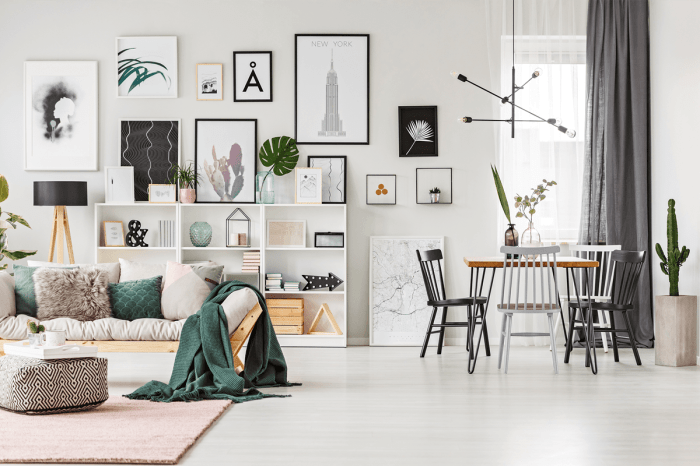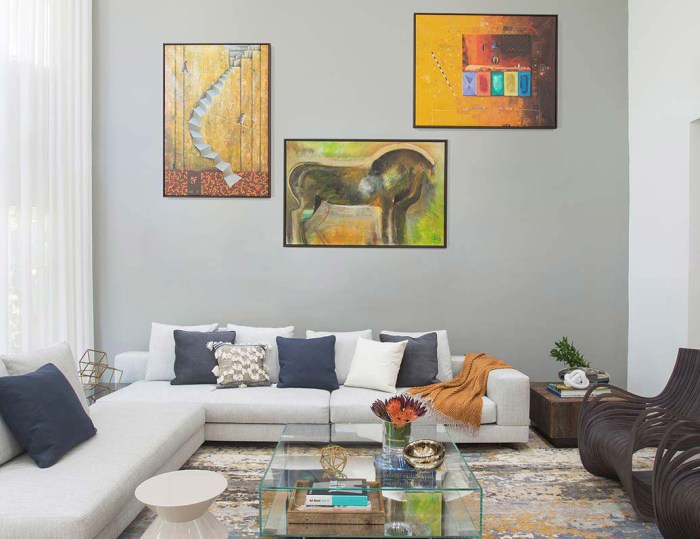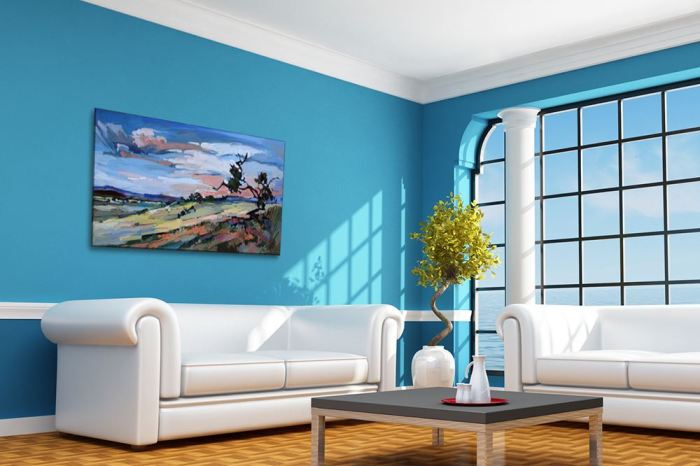Choosing the Best Interior House Paint: A Guide to Pinturas Para Casa Interior
Embark on a journey to discover the world of interior house paints with our guide to pinturas para casa interior. From different types of paints to application techniques, this comprehensive overview will equip you with the knowledge needed to transform your living space.
Types of interior house paints

When it comes to painting the interior of your house, there are several types of paints to choose from. Each type has its own unique characteristics and benefits, so it's important to understand the differences before making a decision.
Water-based vs. Oil-based paints
Water-based paints, also known as latex paints, are easy to clean up with water, have low odor, and dry quickly. They are also more environmentally friendly. On the other hand, oil-based paints provide a durable finish that is resistant to wear and tear.
However, they have a strong odor, longer drying time, and require mineral spirits for clean-up.
Matte, Satin, and Glossy finishes
Matte finish
Offers a non-reflective appearance and hides imperfections on walls. It is ideal for low-traffic areas like bedrooms and living rooms.
Satin finish
Provides a subtle sheen that is easy to clean. It works well in high-traffic areas such as hallways and kitchens.
Glossy finish
Reflects light and is highly durable, making it suitable for trim, doors, and cabinets.
Factors to consider when choosing interior house paints

When selecting interior house paints, there are several important factors to consider to ensure the desired outcome matches your vision for the space. From lighting to paint finishes and color schemes, each decision plays a crucial role in creating the perfect ambiance within your home.
Importance of considering the room’s lighting before selecting a paint color
Before choosing a paint color for a room, it's essential to take into account the lighting conditions. Natural light can vary throughout the day, affecting how colors appear on the walls. A room with ample natural light may showcase a color differently than a room with limited natural light.
It's important to test paint samples under different lighting conditions to see how they change throughout the day.
Choosing the right paint finish based on the room’s purpose
Each room in your home serves a different purpose, and the paint finish should align with that function. For example, high-traffic areas like kitchens and bathrooms benefit from a durable, easy-to-clean finish such as semi-gloss or satin. Bedrooms, on the other hand, may benefit from a more matte finish to create a cozy and intimate atmosphere.
Selecting paint colors that complement existing furniture and decor
When selecting paint colors, it's crucial to consider the existing furniture and decor in the room. Choose colors that complement the tones and style of your furnishings to create a cohesive and harmonious look. You can also use color swatches or online tools to visualize how different paint colors will work with your existing decor before making a final decision.
Preparation before painting
Before starting to paint the interior walls of your house, it is crucial to properly prepare the surfaces. This preparation step ensures that the paint will adhere correctly and result in a smooth and long-lasting finish.
Cleaning the walls
Begin by cleaning the walls thoroughly to remove any dirt, dust, or grease that may be present. Use a mild detergent solution and a sponge to clean the walls, focusing on areas that are particularly dirty. Allow the walls to dry completely before moving on to the next step.
Sanding the walls
After cleaning, it is important to sand the walls to create a smooth surface for the paint to adhere to. Use a fine-grit sandpaper to lightly sand the walls, focusing on any rough or uneven areas. Be sure to wipe away any dust created during sanding before proceeding.
Priming the walls
Priming the walls is essential to ensure proper adhesion and coverage of the paint
Apply the primer evenly using a brush or roller, and allow it to dry completely before applying the paint.
Application Techniques

When it comes to painting the interior of your house, proper application techniques can make a significant difference in the final result. From cutting in edges and corners to rolling paint onto walls, these techniques can help you achieve a professional-looking finish.
Cutting in Edges and Corners
Before you start painting the main sections of the wall, it's crucial to cut in edges and corners with a brush. This technique involves painting along the edges where the wall meets the ceiling, trim, and corners, creating a crisp and clean line.
Here are some tips for cutting in:
- Use a high-quality angled brush for precision.
- Load the brush with an adequate amount of paint, but avoid overloading to prevent drips.
- Start from the corner and work your way outwards for a smooth finish.
- Take your time and maintain a steady hand to avoid mistakes.
Rolling Paint onto Walls
Once you have cut in the edges and corners, it's time to roll paint onto the main sections of the wall. Rolling paint can help you cover large areas quickly and efficiently. Follow these best practices for rolling paint:
- Use a high-quality roller cover to ensure a smooth application.
- Start from the top of the wall and work your way down in sections.
- Apply paint in a "W" or "M" pattern to ensure even coverage.
- Avoid pressing too hard on the roller to prevent roller marks.
Feathering and Blending
To achieve a seamless and professional-looking paint job, techniques like feathering and blending can be helpful. These methods involve blending the edges of freshly painted areas with previously painted sections to prevent visible lines or marks. Here's how to feather and blend:
- Work quickly to blend wet edges with a dry roller or brush.
- Feather out the paint by lightly brushing over the transition areas.
- Overlap the edges slightly to create a smooth transition between colors or sections.
- Step back periodically to ensure consistency and uniformity in the finish.
Final Summary
As we conclude our exploration of pinturas para casa interior, remember that the right paint can truly enhance the beauty of your home. Armed with the information provided, you are now ready to embark on your painting project with confidence and creativity.
FAQ Explained
What are the key differences between water-based and oil-based paints?
Water-based paints are easier to clean up and have less odor, while oil-based paints provide a more durable finish.
How can I choose the right paint finish for different rooms?
For high-traffic areas like kitchens, opt for a satin or semi-gloss finish for easy cleaning. Bedrooms may benefit from a matte finish for a cozy feel.
Why is it important to clean, sand, and prime walls before painting?
Proper preparation ensures better adhesion of the paint, leading to a smoother and longer-lasting finish.




